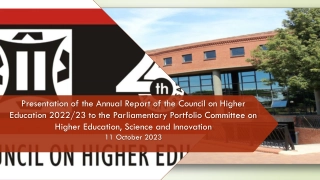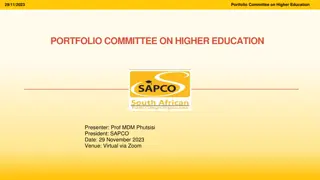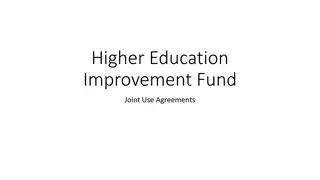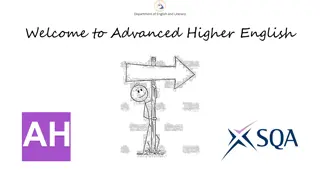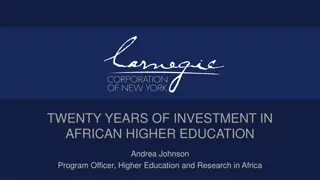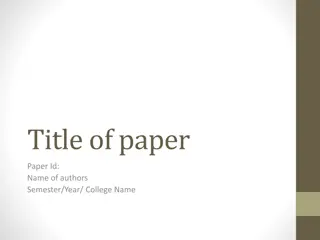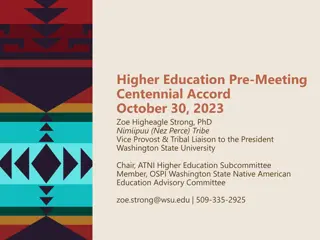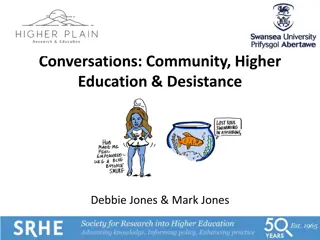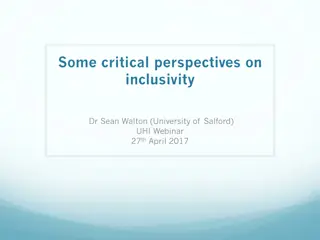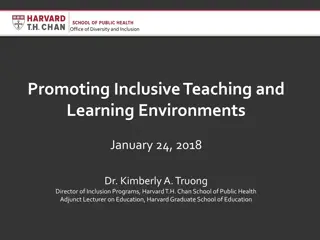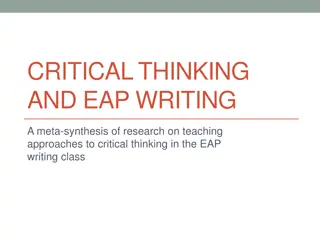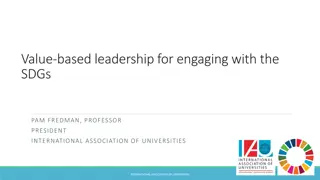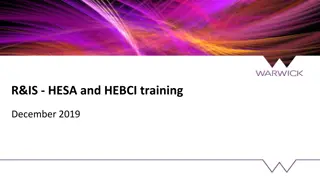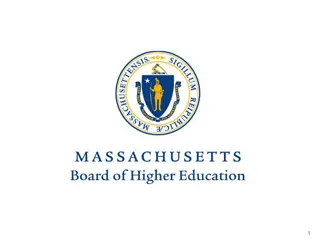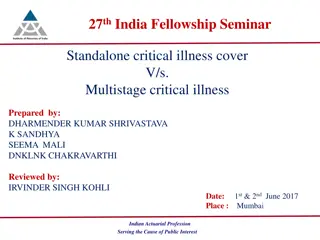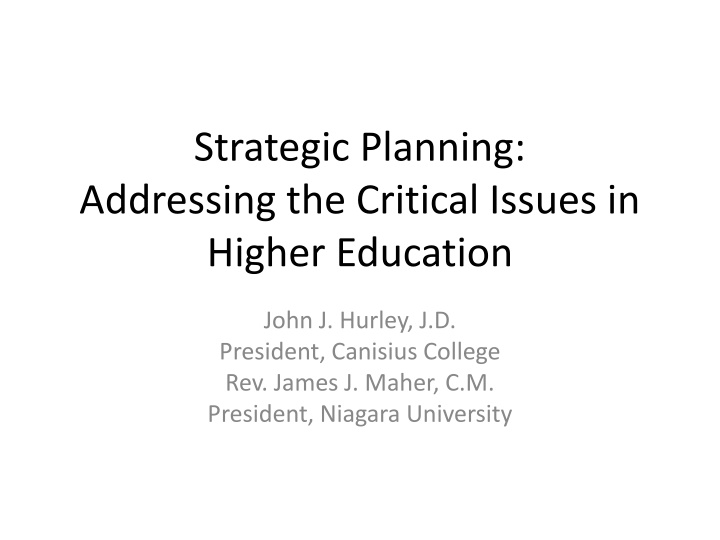
Critical Issues in Higher Education: Challenges & Solutions
Addressing the critical challenges facing higher education such as rising tuition costs, student debt, accountability, and financial issues. Discusses the impact on colleges and universities, student outcomes, and federal support. Offers insights into retention rates, graduation rates, and career readiness in light of accreditation and oversight requirements.
Download Presentation

Please find below an Image/Link to download the presentation.
The content on the website is provided AS IS for your information and personal use only. It may not be sold, licensed, or shared on other websites without obtaining consent from the author. If you encounter any issues during the download, it is possible that the publisher has removed the file from their server.
You are allowed to download the files provided on this website for personal or commercial use, subject to the condition that they are used lawfully. All files are the property of their respective owners.
The content on the website is provided AS IS for your information and personal use only. It may not be sold, licensed, or shared on other websites without obtaining consent from the author.
E N D
Presentation Transcript
Strategic Planning: Addressing the Critical Issues in Higher Education John J. Hurley, J.D. President, Canisius College Rev. James J. Maher, C.M. President, Niagara University
The Context 4100 colleges and universities in the U.S. New York State 189 independent colleges and universities 64 units of SUNY 23 units of CUNY
Costs of College Education The Bureau of Labor Statistics claims that college tuition and fees have gone up 107% since 1992 BUT Net tuition and fees at private 4 year schools have only gone up 22% since 1992 Net tuition and fees at public 4 year schools have gone up 60% Source: The College Board
Student Debt Total student debt is now $1.3 trillion The largest segment of consumer debt after home mortgages BUT 58% - less than $10,000 18% - between 10,000 and $20,000 7% - more than $50,000 Source: The Brookings Institution
Student Debt Share of Personal Income directed to student debt is only marginally higher than it was in 1992 1992 - 3.5% 1998 - 4.3% 2010 - 4.0% Source: The Brookings Institution
Federal Support of Higher Education Total Aid = $167.4 Billion $30.20 $0.98 Grants Federal Work Study Tax Benefits $36.50 $99.70 Loans
The Challenges The model of American higher education is threatened
The Challenges Accountability Retention Rates Graduation Rates Student Outcomes Career-Readiness Relevant Learning Goals PROOF REQUIRED! This is an accreditation and federal oversight issue
The Challenges Financial Issues 40% of private colleges will not achieve net tuition revenue growth above 2% this year 45% of private universities project that enrollment will decline Falling enrollments and rising freshman discount rates will temper future growth of net tuition revenue Source: Moody s Investor Services Sector Report 11/17/2014
The Challenges An Increased Focus on Getting a Good Job Programs aligned with the job markets Soft Skills Additional Special Skills
Some Shakeout/Consolidation in Higher Education is Inevitable What will this look like? Who will be the survivors? Do healthcare or the newspaper industry offer us any models? How do we prepare to be the survivors
The Sign in the Chiropractors Office The Five Most Dangerous Words: Maybe this will go away
Higher Ed Must Prepare Students for a New Economy Graduates need to compete in a global, digital marketplace
Where are the jobs? STEM 29% of the degrees in higher education are awarded in STEM; but 48% of the jobs are in STEM Computers, IT Nursing Hospitality, Food & Tourism Source: Burning Glass Technologies, cIcu Presentation 02.26.14
How Should We Guide Our Students? Only 40% of college graduates thought about their career before selecting a major Less than 10% talked with a career counselor before selecting a major More than one-third regret their choice of major Source: Burning Glass Technologies; NACE, Heldrich Center, Rutgers University 2014
How Should We Guide Our Students? One-half say that college did not prepare them to look for a job More than half wished they took more computer classes One-third wished they had done more internships Source: Burning Glass Technologies; NACE, Heldrich Center, Rutgers University 2014
What Skills Are Needed? Microsoft Excel and Office are employers top requested software skills Basic accounting, data analysis, financial modeling, mathematics, and marketing can nearly double the number of possible jobs for a typical liberal arts graduate. Source: Burning Glass Technologies, 2014
The Necessary Proof Ad hoc examples of success are not enough A true culture of assessment will provide the necessary proof Relevant learning goals Measure our performance with data Continuous improvement The schools that master this will be the leaders
Higher Education Needs a Different Operating Model Costs must be contained A change in focus from inputs to outputs Delivery systems for services need to be streamlined and improved Strategic alliances between and among institutions could lead to creative new approaches
Getting from Here to There: Strategic Planning Vision Where are we going? Mission Why do we exist? Strategic Goals What is our focus? Objectives What results do we want? Actions How will we get there?
The Importance of Mission Ultimately, everything we do must be in furtherance of the mission. We are judged by students, by accreditors, by external publics - by our fidelity to mission. In faith-based institutions, this is an important differentiator
Strategic Goals Critically important new things that must be done to move the institution to the next level Avoid continue , maintain , and further develop Watch out for the planning to plan syndrome
Execution is Critical Detailed plan for each action item Responsible party Budget Time frame Proposed activities Desired outputs Measurable outcomes
Execution is Critical Periodic reviews and revisions Performance metrics Annual individual action plans
Your Challenge What will be your role in crafting the strategic response to the critical challenges your institution faces? College or University-Wide strategic planning committee Critical division, department or other unit plan

